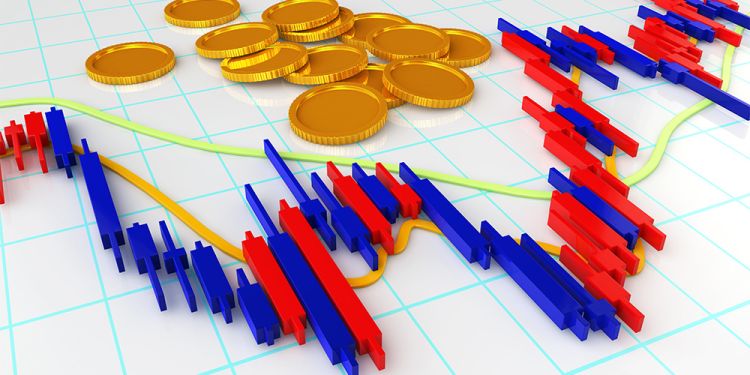Introduction
● Definition: The nominal price of a good is its value in terms of money, such as dollars, French francs, or yen. The relative or real price is its value in terms of some other good, service, or bundle of goods. The term “relative price” is used to make comparisons of different goods at the same moment of time. The term “real price” tends to be used to make comparisons of one good to a group or bundle of other goods across different time periods, such as one year to the next.
Definitions and Basics
● Real versus nominal value, at Answers.com
● In economics, the nominal values of something are its money values in different years. Real values adjust for differences in the price level in those years. Examples include a bundle of commodities, such as Gross Domestic Product, and income. For a series of nominal values in successive years, different values could be because of differences in the price level. But nominal values do not specify how much of the difference is from changes in the price level. Real values remove this ambiguity. Real values convert the nominal values as if prices were constant in each year of the series. Any differences in real values are then attributed to differences in quantities of the bundle or differences in the amount of goods that the money incomes could buy in each year….
● Gross Domestic Product, from the Concise Encyclopedia of Economics
● In practice BEA first uses the raw data on production to make estimates of nominal GDP, or GDP in current dollars. It then adjusts these data for inflation to arrive at real GDP. But BEA also uses the nominal GDP figures to produce the “income side” of GDP in double-entry bookkeeping. For every dollar of GDP there is a dollar of income. The income numbers inform us about overall trends in the income of corporations and individuals. Other agencies and private sources report bits and pieces of the income data, but the income data associated with the GDP provide a comprehensive and consistent set of income figures for the United States. These data can be used to address important and controversial issues such as the level and growth of disposable income per capita, the return on investment, and the level of saving….
● Real vs. nominal interest rates: Interest, by Burton G. Malkiel. Concise Encyclopedia of Economics
● People’s willingness to lend money depends partly on the inflation rate. If prices are expected to be stable, I may be happy to lend money for a year at 4 percent because I expect to have 4 percent more purchasing power at the end of the year. But suppose the inflation rate is expected to be 10 percent. Then, all other things being equal, I will insist on a 14 percent rate on interest, ten percentage points of which compensate me for the inflation. Economist Irving Fisher pointed out this fact almost a century ago, distinguishing clearly between the real rate of interest (4 percent in the above example) and the nominal rate of interest (14 percent in the above example), which equals the real rate plus the expected inflation rate.
In the News and Examples
● How many days of work till you have paid your taxes? Tax Freedom Day. TaxFoundation.org
● Tax Freedom Day will arrive on April 12 this year, the 102nd day of 2011. That means Americans will work well over three months of the year, from January 1 to April 12, before they have earned enough money to pay this year’s tax obligations at the federal, state and local levels.
● Interest, by Paul Heyne. Concise Encyclopedia of Economics
● The real interest rate on money loans will be the stated (or nominal) rate minus the anticipated rate of inflation. In countries that are experiencing rapid growth in the amount of money available, interest rates will be very high. But these will be not be high real interest rates. Instead, they will be high nominal interest rates. If expected inflation is 10 percent, for example, and if the real interest rate is 5 percent, the nominal interest rate is 15 percent. But someone who lends money at 15 percent for a year will not be repaid with 15 percent more resources at the end of the year. Rather, the lender will be repaid with 15 percent more money and will be able to use that money to buy only 5 percent more resources. …
A Little History: Primary Sources and References
● Irving Fisher, from the Concise Encyclopedia of Economics
● Fisher was also the first economist to distinguish clearly between real and nominal interest rates. He pointed out that the real interest rate is equal to the nominal interest rate (the one we observe) minus the expected inflation rate. If the nominal interest rate is 12 percent, for example, but people expect inflation of 7 percent, then the real interest rate is only 5 percent. Again, this is still the basic understanding of modern economists….
● Early understandings of nominal versus real/relative price changes in gold and silver markets. Chapter 5. English Currency Controversies, 1825-1865, by Jacob Viner, from Studies in the Theory of International Trade
● In Hume’s account, changes in price levels thus play the predominant role in bringing about the necessary adjustment of trade balances, and are assisted only by fluctuations in exchange rates, held to be a factor of minor importance. In recent years a number of writers, most notably Ohlin, have contended that such an account leaves out of the picture an important equilibrating factor. These writers insist that much, or even all, of the equilibrating activity commonly attributed to relative price changes is really exercised by the direct effects on trade balances of the relative shift, as between the two regions, in the amounts of means of payments or in money incomes; that when disturbances in international balances occur, the restoration of equilibrium will or can take place unaccompanied by relative price changes or accompanied by only minor changes in relative prices; and that such changes if they do occur will not be, or are not likely to be, or need not necessarily be–which of these is supposed to be the fact is not always made clear–of the type postulated in the later classical doctrine as expounded by J. S. Mill or Taussig. While none of these writers seems to have applied his doctrine to a currency disturbance such as postulated by Hume, where the need for at least temporary price changes of some kind would seem most obvious, it may be assumed, nevertheless, that they would hold Hume’s analysis of the mechanism to be inadequate even when confined to such cases….

